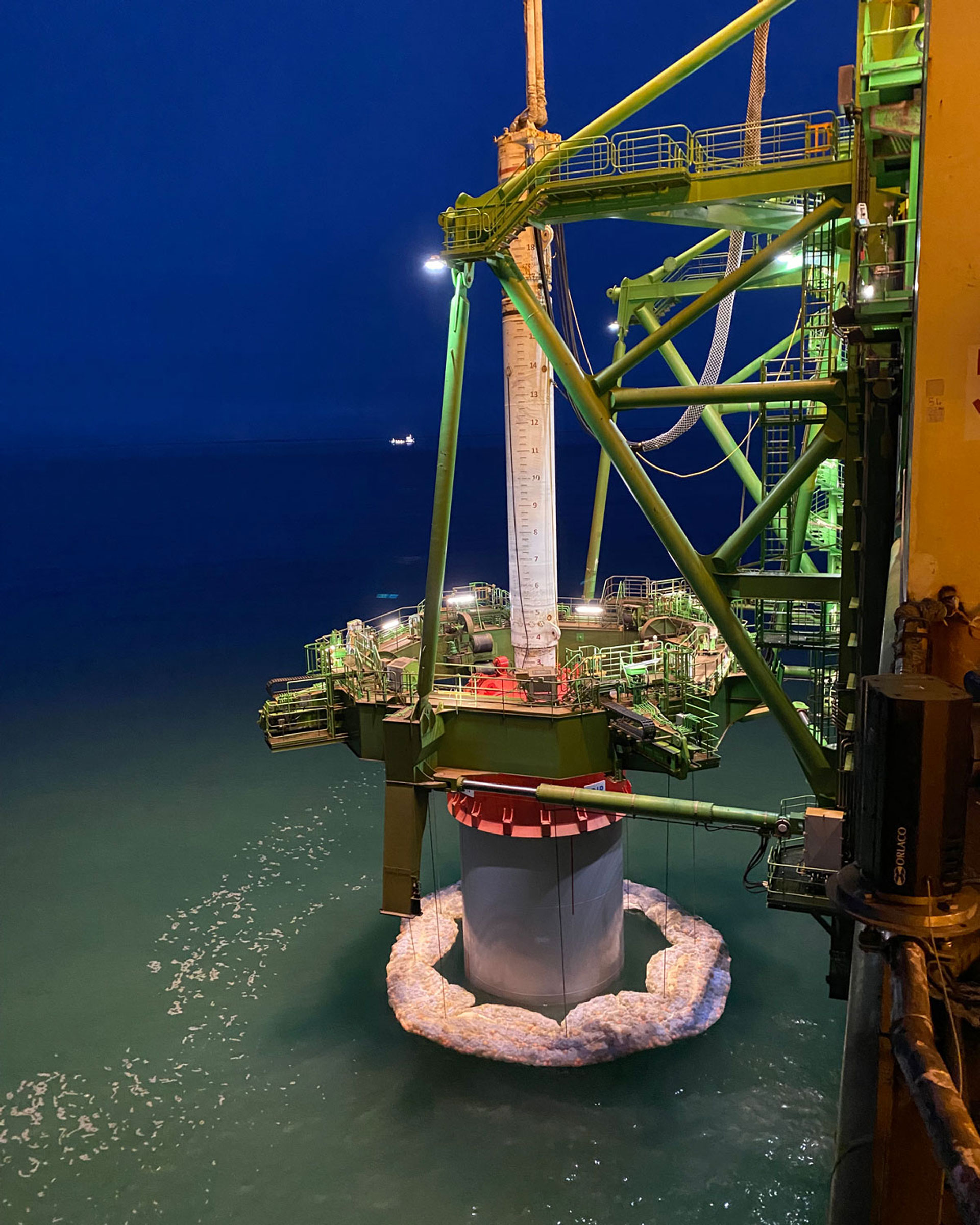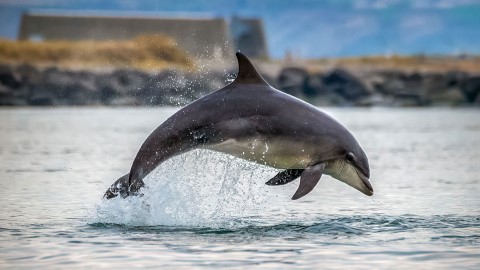Concerns have been raised that the installation of the monopiles of the Danish Vesterhav North wind farm could cause a small pod of dolphins to leave the area. The dolphins have, however, neither left the area nor changed behaviour.
In 2020, wildlife and underwater photographer Lars Mikkelsen discovered the pod of seven dolphins during a sailing trip in the canal between the North Sea and the Limfjord at the Danish coastal town of Thyborøn. Since then, Mikkelsen has been closely following the dolphins that are rare guests in the seas around Denmark.
The small pod of dolphins has for the past three years established residence in the area of the Danish part of the North Sea, where Vattenfall is constructing its Vesterhav offshore wind farms. So, when concerns were raised that the installation of the wind farm’s monopiles could cause the dolphins to leave the area, Vattenfall initiated a collaborative monitoring effort. Fortunately, it showed that the dolphins were still present and have not changed behaviour after completion of the monopile installation.
Vattenfall is committed to preserving marine life and takes the biodiversity crisis just as seriously as the climate crisis. Therefore, Vattenfall has already implemented a series of measures to reduce noise caused by pile driving and its potential effect on biodiversity.
Hydro sound damper system reduces noise caused by pile driving
By the end of this year, the 21 turbines from Vesterhav Nord offshore wind farm will supply enough fossil-free electricity to meet the consumption needs of 180,000 Danish households. As part of the construction phase, monopiles are hammered into the seabed using a hydro sound damper system, which is a physical screen deployed around the pile to absorb noise.

The pile driving begins at reduced force, which is gradually increased to give marine mammals such as seals and porpoises an opportunity to move away from the area before noise levels reach maximum. At the same time, Vattenfall has also measured the underwater noise approximately 750 metres from the pile-driving site to ensure the noise stays below the desired levels.
When the work driving down the wind farm’s foundations approached, Lars Mikkelsen contacted Vattenfall as he was concerned that the underwater noise could disturb the dolphins at Thyborøn. Vattenfall and Mikkelsen quickly reached an agreement with the University of Southern Denmark (SDU) to carry out additional noise measurements in the canal at about 11.5 km from the construction site.
Dolphins seem to be unaffected by the construction activities
To understand the dolphins’ response to the construction activities, Vattenfall collaborated with Mikkelsen and the University of Southern Denmark. The underwater sound measurements and observations took place over several days during construction in April 2023.
“University of Southern Denmark has measured the noise levels during piling in the area where the dolphins are typically found. At the same time, our local partner Lars Mikkelsen has observed the dolphins’ behaviour. What the results indicate is that the dolphins are still there and that they don’t seem to have changed behaviour during or after construction,” says Matthieu Povidis-Delefosse, marine biologist at Vattenfall.
When Vesterhav Nord is put into operation later this year, marine mammals are likely to visit the offshore wind farm.
“Evidence of sightings of whales, porpoises, and dolphins at our offshore wind farm indicates that marine mammals are not deterred by operating offshore wind farms, and in some case can even be attracted to them”, as Matthieu Povidis-Delefosse puts it.
“An offshore wind farms can function as an artificial reef, and due to the offshore wind farm it is protected from activities such as bottom trawling. These conditions allow fish to thrive with potential benefit for marine species at the top of the food chain such as seals, porpoises, and dolphins”, says Matthieu Povidis-Delefosse.
Facts:
- The dolphins at Thyborøn are Common Bottlenose dolphins (Tursiops truncatus)
- Common Bottlenose dolphins are normally a rare sight in Denmark, but small groups are sometimes seen along the coasts for periods of a few months to several years.
- The Common Bottlenose dolphin is 2-4 metres in length and weighs between 150-650 kilos.
- The Common Bottlenose dolphin’s diet consists of fish, squid, and crabs.
By Mads Krogh


